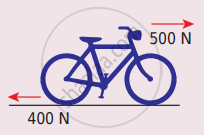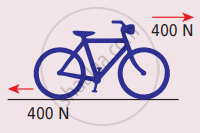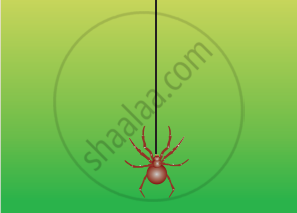Advertisements
Advertisements
प्रश्न
Choose an appropriate free body diagram for the particle experiencing net acceleration along the negative y-direction. (Each arrow mark represents the force acting on the system).
पर्याय
उत्तर

APPEARS IN
संबंधित प्रश्न
Choose the correct answer.
Consider following forces: (w) Force due to tension along a string, (x) Normal force given by a surface, (y) Force due to air resistance, and (z) Buoyant force or upthrust given by a fluid.
Which of these are electromagnetic forces?
Choose the correct answer.
The rough surface of a horizontal table offers a definite maximum opposing force to initiate the motion of a block along with the table, which is proportional to the resultant normal force given by the table. Forces F1 and F2 act at the same angle T with the horizontal and both are just initiating the sliding motion of the block along with the table. Force F1 is a pulling force while the force F2 is a pushing force. F2 > F1, because
A mass 2 m moving with some speed is directly approaching another mass m moving with double speed. After some time, they collide with a coefficient of restitution of 0.5. The ratio of their respective speeds after the collision is ______.
Two masses m1 and m2 are experiencing the same force where m1 < m2. The ratio of their acceleration `a_1/a_2` is ______
When the object is moving at a constant velocity on the rough surface, ______
Calculate the acceleration of the bicycle of mass 25 kg as shown in Figures 1 and 2.


What is the reading shown in spring balance?

A spider of mass 50 g is hanging on a string of a cobweb as shown in the figure. What is the tension in the string?

A wire of length L is hanging from a fixed support. The length changes to L1 and L2 when masses 1 kg and 2 kg are suspended respectively from its free end. Then the value of L is equal to :
A block of mass 40 kg slides over a surface when a mass of 4 kg is suspended through an inextensible massless string passing over a frictionless pulley as shown below. The coefficient of kinetic friction between the surface and block is 0.02. The acceleration of the block is ______.
(Given g = 10 ms-2.)




